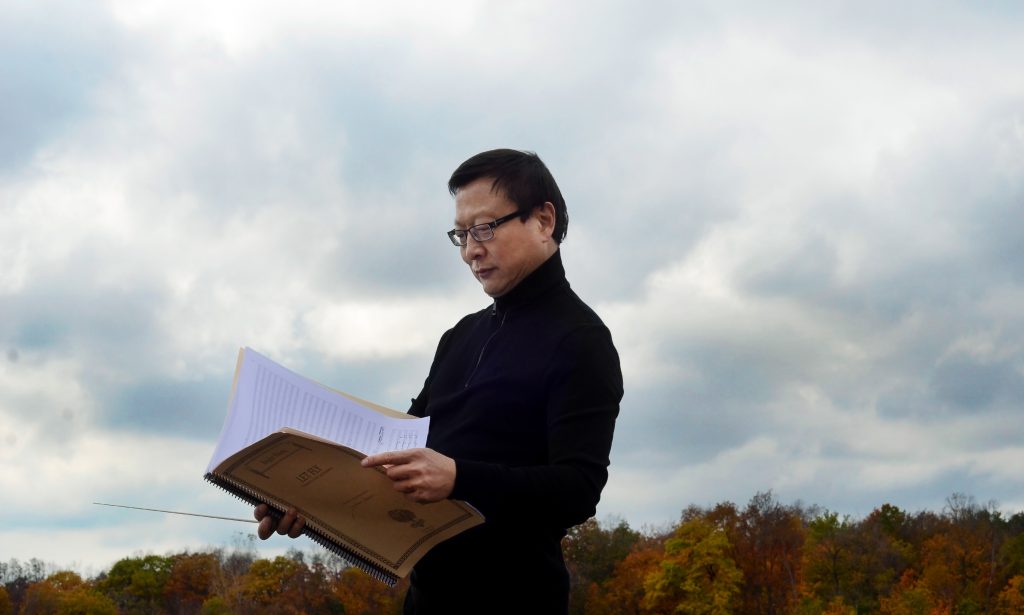
By Dennis D. Rooney
South Florida is extremely fortunate to have the Lynn Conservatory of Music. The all-scholarship school attracts outstanding students internationally. Their studies are punctuated by participation in public concerts.
The Lynn Philharmonia is the institution’s student orchestra. It offers six programs per season under the musical directorship of Guillermo Figueroa, who was on the podium for the fourth program of the orchestra’s 25th season Jan. 28. Those who have heard the orchestras of New York’s Juilliard School and Philadelphia’s Curtis Institute know that the Lynn Philarmonia approaches the level achieved by those ensembles.
However, they also know that such orchestras are training laboratories whose members seek to improve their instrumental skills, rather than assemble primarily for public performance. Nevertheless, their concerts present repertoire staples and novelties performed to a standard higher than can often be achieved by other orchestras in the community.
Figueroa opened the program at Lynn’s Wold Center for the Performing Arts with the Dresden version of Wagner’s overture to his opera Tannhäuser. Save for some uncertain intonation in the winds during the “Pilgrim’s Chorus,” it was a vigorous and suave account of the score that featured some mellifluous sounds from strings and brass.
The guest soloist for the concert was harpist Deborah Fleisher, an artist-in-residence at the Lynn conservatory. She performed the local premiere of Never Far Away, a concerto for harp and orchestra by Bright Sheng, a Chinese composer long resident in the U.S.
Never Far Away was first heard during the 2008-09 season. Its three movements are entitled “Moonlight Shadow,” “The Drunken Fisher,” and “Doctored Pentatonics,” the last being the composer’s whimsical reference to his varied use of pentatonic motifs throughout the movement. The first is a song sung by a maiden to a distant beloved and the second was inspired by a Chinese classical work for qin (which Sheng describes as a “seven string zither”) having the same title. The concerto proved very appealing both in sound and in its variety of instrumental textures and colors. Except for the harpist’s emulation of the qin in the second movement, there were scant suggestions of orientalisms.
“Moonlight Shadow” was pastoral in mood and agreeably consonant. In addition to the qin imitations already mentioned, “The Drunken Fisher” featured episodes with broad glissandi both up and down in the strings and outbursts from the brass section. Near the close of “Doctored Pentatonics,” the pastoral mood of the opening was recalled briefly before the fast coda.
Fleisher and her instrument were placed front and center on stage, where her sound was always primus inter pares but at the same time ideally nested within the orchestra. A member of a harp dynasty, her playing was never less than technically adroit and beautifully variegated in tone.
On the second half, Figueroa led a soundly organized, well-rehearsed and expressively just account of Schumann’s Symphony No. 2 (in C, Op. 61). The Sostenuto assai introduction to the first movement was of a breadth that might have challenged the breath control of some of the woodwinds and brass, but the solemn character of the opening theme emerged ideally and the transition to the succeeding Allegro ma non troppo was smoothly managed.
The remaining movements, the Allegro vivace scherzo, the Adagio espressivo, and the Allegro molto vivace finale, were all successfully characterized in turn. The work’s musical ideas and structural features are well known to many, and the performance reminded those familiar with them of their value while at the same time introducing them with a freshness to delight newcomers.